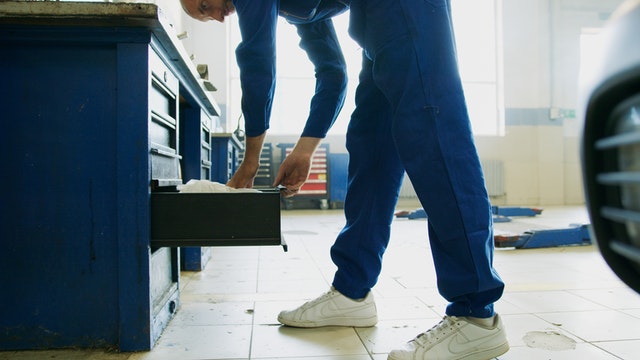A fire inspector will inspect electrical systems. Good electrical systems can prevent fire from spreading by igniting electrical equipment. Companies should have their electrical systems inspected annually or more frequently as local ordinances require. It is also important to have fire safety inspections performed when remodeling or building a new facility. You can prepare for a fire safety inspection by following these guidelines. You should also maintain your equipment and keep records of all necessary repairs and maintenance.
Effective recordkeeping
A fire inspector who has undergone fire inspector training will check whether a building has an effective recordkeeping system. It will allow the inspector to track the fire safety practices implemented in the building and any instances when the practices were not followed. The inspector will also check for a proper timeline for making corrections. An effective recordkeeping system will also help a building comply with regulations and avoid fines.
If you’re responsible for your building’s security, you’ll want to ensure that access to the fire department is simple. Make sure that the address and phone number of the fire department are visible and easy to find. Also, make sure there is easy access to water and fire hydrants. You should also ensure that the fire department can access the building lockbox. It is because if an elevator is not working properly during a fire, people will be trapped inside. Fire inspections are essential to keeping your building safe for your employees and tenants. Fire can destroy businesses, so it is critical to make sure that you’ve taken proactive steps to ensure all fire safety practices are in place.
Maintaining equipment
One of the things a fire inspector looks for in a building is the state of the building’s fire safety systems. Inspectors check that fire egress systems are in proper working order and have lighted exit signs. Fire sprinkler systems and fire alarms must be inspected as well. If they don’t meet code requirements, they can be considered non-compliant and may violate them.
Preparing for your building’s annual fire alarm or sprinkler inspection is a good idea. Some insurance carriers give discounts to buildings with properly maintained fire safety systems. If you’re not prepared for the inspection, ask for a reschedule. If you’re unprepared, the fire inspector may reschedule it for another day. But, it’s a good idea to be prepared for the inspection before the inspection, and the inspection results can give you a heads-up for future maintenance.
Overloading electrical sockets
Overloaded electrical sockets can cause fires. If a circuit is too full, the wires can melt and ignite, causing a fire. Electrical malfunctions are the cause of nearly 50,000 home fires each year. Not only can they lead to property damage, but they can also cause injury or death. That’s why learning to identify the warning signs of overloaded circuits is important. A flickering light is an example of an overloaded circuit.
Electrical panels in buildings often have overloaded extension cords. Extension cords should not create an octopus. Keeping extension cords under a specific wattage is a great idea, but don’t overload them. Using too many multi-plug outlets can overload the socket and cause a fire. When using multiple plug outlets, always use grounded extension cords.
Overloading flammable liquids
One of the things that a fire inspector looks for in a building is whether it’s overloaded with flammable liquids. These can be anything from oil-based paints to grease. Some flammable gases and aerosols can be dangerous if they ignite. Overloading can put the lives of occupants in a building at risk, so it’s essential to have an appropriate supply of these materials.
A fire inspector follows a checklist when performing a fire safety inspection of a building. The checklist is designed to catch any fire safety deficiencies and comply with applicable fire codes. State fire codes and ordinances may be different than those found on a national level, so it’s important to become familiar with them before undergoing your inspection. These fire codes explain exactly what needs to be done to meet them and how to install them. In essence, they help ensure the safety of workers and the public.
Keeping flammable liquids away from heat and children
One of the first things a fire inspector checks when evaluating a building is its safety practices. Inflammable liquids, such as gasoline and matches, should be stored away from children and away from heat. Also, space heaters should be kept at least three feet from children. Fireplaces should have screens installed. And make sure you have a safe ashtray and ash removal method. Store flammable liquids in locked containers, away from heat and flames, and out of reach of children.
A fire inspector also looks at how well fire safety equipment is maintained. Properly maintain all fire safety systems, including alarms, smoke detectors, and smoke detectors. You should store flammable liquids in locked closets and keep fire extinguishers and water at hand. Ensure electrical outlets are covered with safety caps and don’t leave any electrical cords around children. If you have a wood-burning fireplace, keep its stovepipe free of loose bricks. Use a fireplace screen, and never leave a lighter near a furnace or gas meter.
Preparing for a fire inspection
If you’re preparing for a fire inspection, there are many steps you can take to ensure that your building complies with all regulations. First, ensure firefighters can access your property and get inside if necessary. Next, ensure that you post your building address prominently, have unlocked fire doors, and make sure that all emergency exits are easily accessible. Finally, you can even change the lock on your firebox if you’d like. By taking these simple steps, you can avoid hefty fines and violations.
Fire safety inspections are part of doing business. Fire safety programs involve periodic inspections of structures, warnings, and notifications about potential hazards. In addition, business owners should conduct an internal self-inspection process to ensure their facilities’ safety and prepare for fire marshal inspections. It’s also important to know which areas of your building are considered non-compliant to ensure they’re in compliance.



